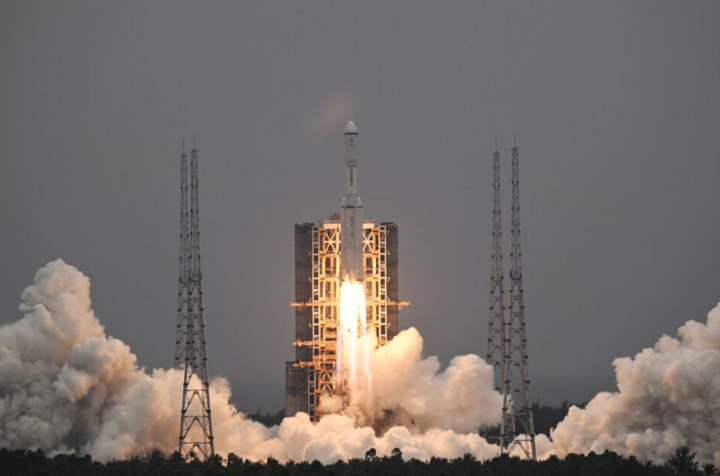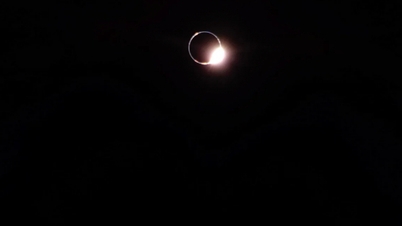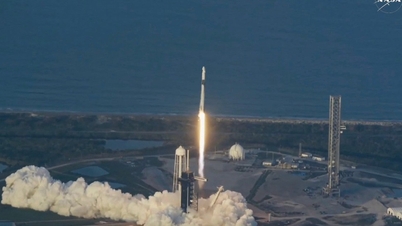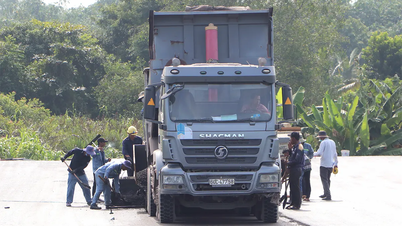The Long March 8 rocket carrying the 1.2-ton Cau O Thuoc-2 satellite and two miniature satellites Thien Do-1 and 2, launched from the southern island province of Hainan, will help relay signals from the far side of the moon to devices on the ground, Chinese state media reported.
Normally, the near side of the moon always faces Earth. That means data cannot be transmitted from the far side because there is no direct line of sight. The Wushu-2 bridge will orbit the moon and relay signals to and from the Chang'e-6 spacecraft, which is scheduled to launch in May.

China launches signal relay satellite for Moon mission.
The Chang'e-6 probe's mission will seek to retrieve samples from an ancient basin on the far side of the Moon.
The Wushu-2 Bridge will also be used as a relay platform for the Chang'e-7 lunar mission in 2026 and the Chang'e-8 mission in 2028. By 2040, the Wushu-2 Bridge will be part of a relay satellite constellation that will serve as a communication bridge for lunar missions and exploration missions to other planets such as Mars and Venus. The constellation will also provide communication, navigation, and remote sensing support for China's planned research station on the moon's south pole.
The O Thuoc-2 bridge has a design life of at least 8 years and will succeed the O Thuoc-1 bridge, launched in 2018, which had a design life of 5 years and weighed only 1/3 as much.
In 2019, Chang'e-4 became China's first spacecraft to make a soft landing on the far side of the moon.
Source


![[Photo] Vietnamese and Hungarian leaders attend the opening of the exhibition by photographer Bozoky Dezso](https://vphoto.vietnam.vn/thumb/1200x675/vietnam/resource/IMAGE/2025/5/28/b478be84f13042aebc74e077c4756e4b)

![[Photo] Prime Minister Pham Minh Chinh receives a bipartisan delegation of US House of Representatives](https://vphoto.vietnam.vn/thumb/1200x675/vietnam/resource/IMAGE/2025/5/28/468e61546b664d3f98dc75f6a3c2c880)
![[Photo] General Secretary To Lam works with the Central Policy and Strategy Committee](https://vphoto.vietnam.vn/thumb/1200x675/vietnam/resource/IMAGE/2025/5/28/7b31a656d8a148d4b7e7ca66463a6894)

![[Photo] 12th grade students say goodbye at the closing ceremony, preparing to embark on a new journey](https://vphoto.vietnam.vn/thumb/1200x675/vietnam/resource/IMAGE/2025/5/28/42ac3d300d214e7b8db4a03feeed3f6a)


























































































Comment (0)